
Nutrition21 is a leader in the sports nutrition industry, making huge strides towards supplement research, safety, transparency, and efficacy
Over the years, we've covered ingredients developed by Nutrition21, a leading developer and supplier of nutritional supplement ingredients. This article serves to differentiate Nutrition21's sports nutrition ingredient profile, explaining their differences, use cases, and research studies.
Nutrition21 is an American company that creates novel, patented ingredients designed to improve and maximize human health and performance. Over time, we've come to realize that they aren't just an "ingredient supplier", but are a research company, having funded and published several placebo-controlled, double-blinded studies.
Nutrition21’s Sports Nutrition Ingredients
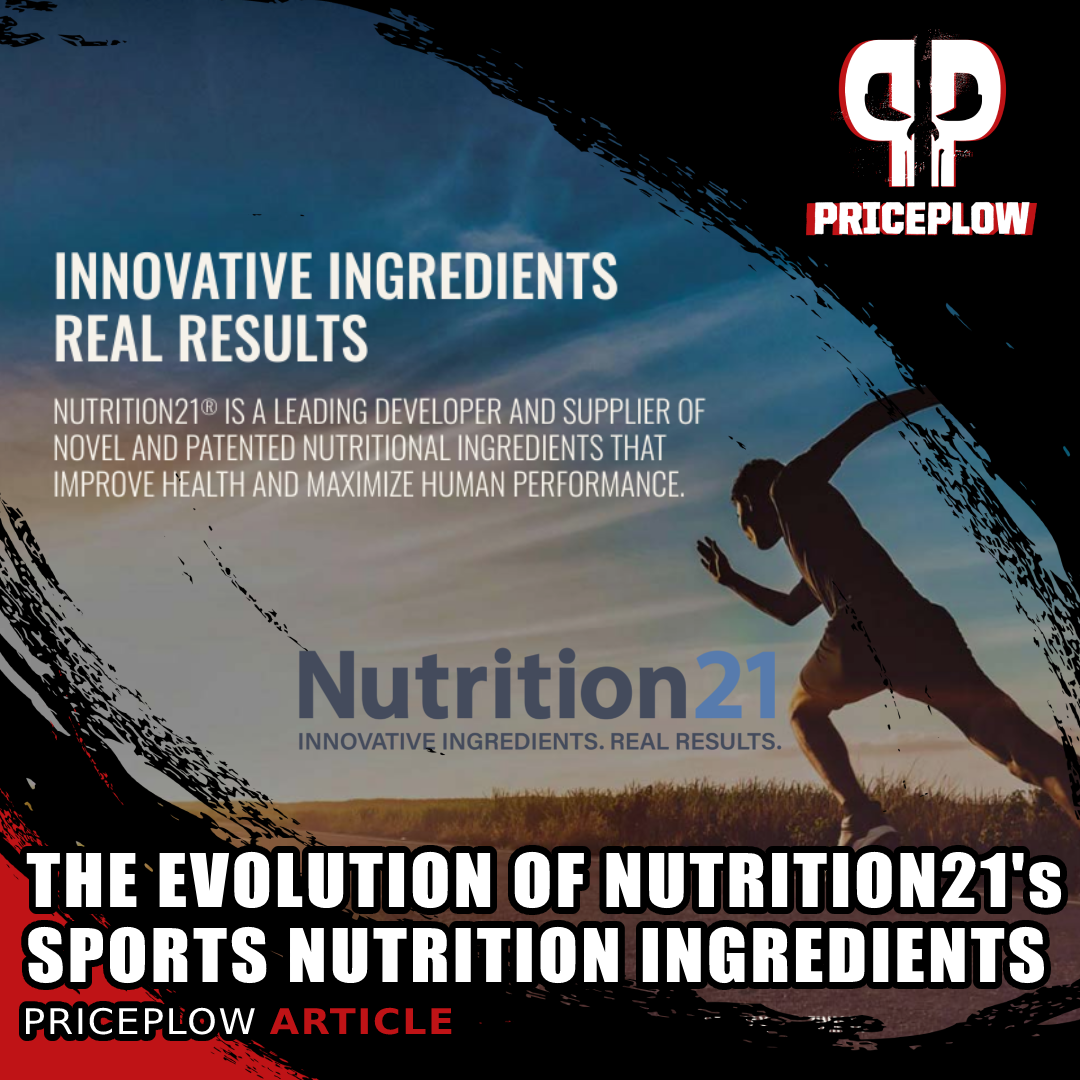
Confused about Nutrition21's Sports Nutrition Ingredients? This article explains their key characteristics, differences, and how they've come to market over time
The company's four primary patented sports nutrition ingredients include:
- Nitrosigine - A powerful, non-stimulatory nitric oxide booster taken pre workout that improves blood flow, focus, and perceived energy.
- nooLVL - A research-backed esports / gaming supplement that increases blood flow and enhances performance in fast-paced competition without stimulants.
- Chromax - A highly-bioavailable form of chromium, chromium picolinate, with over 35 human studies demonstrating improved weight management, body composition, appetite, insulin function, glucose response, and more when used with a healthy diet and exercise.
- Velositol - A chromium-driven complex designed to be taken alongside protein to boost muscle protein synthesis (MPS) for enhanced muscle growth and recovery.
Performance enhancement and metabolic enhancement
These four ingredients primarily bring two classes of benefits: performance enhancement and metabolic enhancement. We cover the four ingredients below, but first, be sure to subscribe to our Nutrition21 news alerts so that you catch articles and videos made about the topics that interest you most:
Subscribe to PricePlow's Newsletter and Alerts on These Topics
There's some overlap between the two major benefits listed above, since improved metabolic health should yield improved performance (and vice versa), but performance and metabolism are the best way to categorize these ingredients:
-
Nutrition21’s Performance Enhancers
-
Nitrosigine - Pre workout nitric oxide booster
Move over L-arginine, Nitrosigine (inositol-stabilized arginine silicate) actually makes it work as originally desired!
If asked to keep our explanation as simple as possible, we always state that Nitrosigine is an arginine ingredient that actually works.
A brief primer on nitric oxide
Nitrosigine helps the body produce significant amounts of nitric oxide (NO), a gaseous signaling molecule that's one of our body's most important biological messengers. Nitric oxide is used to relax smooth muscle surrounding the blood vessel, resulting in a process we call vasodilation, where the vessel dilates (expands).[1]
Vasodilation allows for increased blood flow and nutrient delivery,[2] yielding several performance and aesthetic-based improvements. In gym circles, we call this "the pump".
Introducing arginine
In order to generate nitric oxide, the body uses the amino acid L-arginine as a precursor.
Since the creation of pre workout supplements in the late 1990s and early 2000s, supplement companies have attempted to use L-arginine to increase the user's nitric oxide production, which made sense in theory. However, this had middling results because supplemental L-arginine is not very orally bioavailable due to the first pass-effect, where much of the amino acid is broken down by intestinal bacteria before it can carry out its intended function later on in the bloodstream.[3,4]
Fixing arginine
Nutrition21 worked to make L-arginine into the pre workout ingredient the industry had originally hoped it to be. In doing so, they created "inositol-stabilized arginine silicate" (ASI), better known as Nitrosigine. As opposed to standalone L-arginine, Nitrosigine is a patented complex of arginine, inositol, and potassium silicate.[5] This combination significantly increases the bioavailability of L-arginine, which is then less likely to be destroyed by the digestive system and remains in the system long enough to generate far more plasma L-arginine and nitric oxide.[6]
When compared against arginine HCl in both humans and animals, Nitrosigine worked better.[6,7] Not only did it significantly enhance blood arginine levels 6 hours after taking it (arginine HCl only did so for one hour), it also reduces arginase activity.[8] A reduction of arginase leads to the prevention of arginine's breakdown, so this mechanism explains how Nitrosigine's effects last so long.
Research published on Nitrosigine
Nitrosigine can be used alone or in combination with other nitric oxide enhancing ingredients. A recent study out of the University of Arkansas determined that 1.5 grams of Nitrosigine improved blood flow and nitric oxide levels similarly to 8 grams of citrulline malate,[9] another common pre workout ingredient that utilizes the arginine pathway. This leads us to believe that on a gram-to-gram basis, Nitrosigine is stronger than citrulline and citrulline malate.
As a research company, Nutrition21 has funded several studies on Nitrosigine as well. There have been multiple clinical trials showing that Nitrosigine can increase mental energy, focus, and cognitive flexibility.[7,10-14] These effects likely span from the improvements in vasodilation and subsequent blood flow, and are subject to the next ingredient covered below, nooLVL.
Other studies have found that Nitrosigine can mitigate cognitive decline caused by extreme exercise,[7,10] and there's evidence to suggest that using Nitrosigine can decrease muscle damage and inflammation,[15] thus promoting recovery. All in all, the above data combined with anecdotal reviews all coming to the same conclusion: Nitrosigine is a stellar pre workout supplement ingredient.
You can read more about Nitrosigine and individual studies in the articles below:
- Nitrosigine: The Nitric Oxide Booster That Enhances Brain Function
- Nitrosigine Put to the Test Against Citrulline Malate: New University Study
- Nitrosigine Prevents Cognitive Decline After Strenuous Activity
The Last Five PricePlow Articles Mentioning Nitrosigine
In general, Nitrosigine significantly improves nitric oxide levels, yielding numerous benefits. When it comes to the sports nutrition sector, that generally means performance-based muscle pumps, but as alluded to above, there are cognitive benefits as well:
-
nooLVL: The Clinically-backed esports Nootropic
Learn more in our NooLVL explainer
Discovering Nitrosigine's success in cognitive improvements, Nutrition21 took its technology and did themselves one better with the creation of nooLVL, the world's first clinically-backed dietary supplement ingredient developed and tested on gamers playing modern games.
Known as esports, competitive gaming has grown tremendously, with ever-increasing stakes and prizes. Numerous sodas, energy drinks, and supplements have targeted gamers, but most fall short for various reasons -- poor nutrition / high sugar content, energy crashing, or non-efficacious dosing of ingredients that matter.
Knowing what they had from Nitrosigine's blood flow improvements, Nutrition21 enhanced the ingredient and tested it on gamers with incredible success.
Added inositol for more cognitive energy
With nooLVL, Nutrition21's R&D team took Nitrosigine's inositol-stabilized arginine silicate formula, and added even more inositol.[16]
The Stroop test is a neurocognitive test where subjects must read aloud the color of the text that is printed rather than the actual text! It evaluates selective attention, response inhibition, and reaction time. Fewer errors are better!
Inositol is a natural sugar that's highly concentrated in the brain, playing a critical role in cell-to-cell signaling with neurotransmitters and cell structure stability, amongst several other jobs it carries out.[17,18] It is a key precursor for messenger systems that relay signals between neurons.[18]
With this powerful combination, Nutrition21 put it to the test in 2019, recruiting gamers who play at least five hours per week, and tested their skills with modern games. Researchers recruited 60 healthy game-playing men and women and tested their accuracy, decision-making, and reaction time when gaming. A control group was given placebo, while the nooLVL group was given 1500mg of inositol stabilized arginine silicate along with 100mg extra inositol (nooLVL).[19] The groups were blinded from the researchers.
After just a single dose, the participants in the nooLVL group had significantly better reaction time, accuracy, and energy compared to the placebo group.[19] The researchers concluded that nooLVL was an effective esports performance booster.
Researched with modern games
One of the most important facets of the study above is that the researchers used modern games - as in Call of Duty, Fortnite, and Madden. This brings far more relevance to the study, given the level of intensity and competitive nature of these games.
You can read more about nooLVL and see notable gaming supplement that use it in the articles below:
- nooLVL: Next-Level Focus Ingredient for Gaming Supplements
- Inositol: Why It's Added to nooLVL For Increased Gaming Performance
The Last Five PricePlow Articles Mentioning nooLVL
-
-
Nutrition21’s Metabolic Enhancers
Next we dig into Nutrition21's two chromium-based ingredients, which can work to fight insulin resistance and improve insulin sensitivity. This is of paramount importance, since insulin resistance is associated with countless negative health consequences,[20,21] and some estimate that as many as 88% of Americans are not metabolically healthy.[22]
While we always recommend cleaning up the diet and eliminating ultra-processed foods made from refined carbohydrates and toxic oils whose byproducts drive insulin resistance,[23] we're always excited to see ingredients that can improve insulin sensitivity and increase protein utilization.
-
Chromax - Chromium Picolinate
For over 25 years, Chromax chromium picolinate has been improving insulin sensitivity. We argue that it's only gotten better, as dietary deficiencies have gotten worse over this time period.
Chromium is an essential mineral whose primary metabolic role assists insulin secretion,[24-26] assisting the body in its carbohydrate-processing functions. Nutrition21's Chromax is pure chromium picolinate, which is the most well-researched, highest-performing source of chromium. Chromax has been safely sold to dieters for over 25 years.
In the sports nutrition world, we see Chromax used for diet, weight loss, and appetite support as well as glucose disposal purposes, where athletes are attempting to pack more carbohydrates into muscle tissue as opposed to fat cells.
Chromium Picolinate / Chromax vs. other forms of chromium
In a 2014 review, researchers analyzed 25 studies that used chromium supplements to combat insulin resistance. They found that chromium supplements significantly lower blood glucose levels[27] and that chromium picolinate is the best-performing form of the mineral.[27] Additional studies have come to the same conclusion.[28]
Appetite suppression
Two studies at higher doses (600mcg and 1000mcg daily) have shown that chromium picolinate can reduce cravings and appetite,[29,30] assisting with an obvious pain point in our modern food environment.
Weight loss with chromium
In terms of weight loss, chromium's results are mixed, mainly due to studies where users increase muscle mass! One meta analysis has shown weight loss after three months of supplementation,[31] but another saw no change in BMI,[32] likely due to the added resistance training.
This is why we focus on body composition rather than weight alone, since muscle mass matters. In those cases, research has been successful using doses of 200mcg and 400mcg of chromium daily,[33,34] where higher percentages of lean mass were found - a better tell for overall metabolic health and aesthetic than weight itself.
Short-term effects for healthy individuals
While Chromax's benefits work best in insulin resistant dieters, research has shown that it can facilitate acute blood sugar and insulin responses in healthy users.[35] This has application for athletes looking to ingest high amounts of carbohydrates post workout who don't want the deleterious effects of prolonged high blood sugar levels.
Chromax has been shown to decrease total caloric intake, which would help promote weight loss! Image courtesy of Nutrition21.
Adding more supplemental chromium with Chromax
Ultimately, we're excited about nearly any Chromax-containing supplement because of the disastrous consequences of lack of dietary chromium, such as greater potential for heart disease risks[36,37] on top of increased insulin resistance.
You can read more about Chromax and see notable supplements using it in our articles titled Chromium Picolinate: The Ultimate Trace Mineral For Insulin Sensitivity and Chromax Chromium Picolinate: 25+ Years of Insulin Sensitivity Improvement.
The Last Five PricePlow Articles Mentioning Chromax
-
Velositol
With Nutrition21's decades-long expertise in chromium, they came to some realizations regarding the body composition research discussed above. While Chromax works best for insulin-resistant individuals, it's important to realize that the ingredient can improve insulin sensitivity in muscle tissue.
Made by Nutrition 21, the experts in Chromium and Insulin management, Velositol can boost Muscle Protein Synthesis by using chromium and a 'tickle' of insulin-spike from amylopectin!
With that in mind, Nutrition21 took chromium back to the athletes, developing Velositol, a chromium-based ingredient designed to improve muscle protein synthesis when paired alongside protein.[38] Velositol is made of a modified-release chromium complex with a special form of amylopectin. The goal of Velositol is to increase exercise-induced muscle protein synthesis (MPS) when used alongside a protein.
Velositol can enhance insulinogenic response, boosting amino acid uptake and driving nutrients into the muscles - especially when taken close to a workout. With proper training and protein intake, this should ultimately promote leaner body composition.
When launched in 2017, Nutrition21 stated the following about Velositol:
"A patented ingredient designed to double the effects of protein and exercise on muscle protein synthesis (MPS). When added to protein, Velositol's novel complex rapidly stimulates insulin release and increases the muscle cell's sensitivity to insulin. This helps to safely increase insulin levels and enhance the body's amino acid uptake, stimulating and boosting MPS. Velositol has attained GRAS (generally regarded as safe) status for 2 grams, to be used in protein drinks (including ready-to-drink and powder), meal replacement bars, energy and protein bars."
-- Nutrition21 Press Release
The Velositol research
In its first clinical study, researchers tested two groups: a whey protein and exercise control group, and an exercise group that took whey protein mixed with Velositol.[39] They then looked at MPS, as measured by the fractional rate of protein synthesis (FSR) in skeletal muscle.
Clinical research shows Velositol effectively doubles the power of "suboptimal doses of protein" when the two are consumed together. We're cautious when we see graphs like this, so keep reading for the larger doses.
The results indicated that the Velositol + whey group had significantly greater muscle protein synthesis (as measured by FSR) after a single dose![39] It's worth noting that the whey protein dosages were sub-optimal, a great viability demonstration showing if Velositol could make more from less and showing usefulness in protein bars and amino acid formulas, which generally have less total protein.
Research at higher protein doses
Next, Nutrition21 needed to determine if the Velositol complex could work with larger protein doses in animals. Using animal models, researchers used three different supplement with and without a 2 gram human equivalent dose of Velositol:[40]
- Escalating doses of whey protein (ranging from 6 grams to 40 grams in human equivalents)
- Pea protein (6g human equivalent), or
- BCAA (6g human equivalent)
After a treadmill exercise, the Velositol + protein groups showed significantly greater muscle protein synthesis compared to protein alone.[40] It continued to work with larger protein doses, and although the effect was less pronounced, it was still significant.
New research shows that Velositol in combination with 15g of whey protein boosts exercise performance!
In addition, all Velositol groups had significantly higher levels of musclin, a myokine ("muscle messenger") released during exercise that leads to muscle protein synthesis and hypertrophy.[41]
Velositol’s effects on exercise performance
In a more recent human study, researchers determined that active men using 15g protein combined with Velositol saw significant increases in lower-body muscular endurance and relative squat strength compared to groups not taking the enhanced chromium complex.[42] They also saw improved net protein balance within four weeks, although the non-Velositol group caught up after the full 8 weeks.
You can read more about Velositol in our articles titled Velositol: Enhancing Muscle Protein Synthesis with Science and Velositol Increases Exercise Performance: New University Study Previewed.
-
Worth mentioning, Nutrition21 has additional ingredients such as their Lustriva skin care supplement, but that's out of the scope of sports nutrition supplement ingredients.
Trust, but verify: Ingredients backed by CertainT
Nutrition21 is as serious about quality and reliability as they are with their research. In order to verify that every supplement contains Nutrition21's authentic ingredients, they utilize CertainT technology, which employs a biotagging process that allows them to ensure the proper dose and ingredient origin.
This means that every tub that says 1500mg Nitrosigine per serving contains exactly that, manufactured under Nutrition21's watchful eye, and nothing less.
Nutrition21: A research company first (but with powerful ingredients)
It's rare to see ingredient suppliers put so much energy and intensity into research - especially with multiple studies per ingredient. Nutrition21 has set the standard for sports nutrition ingredients, and some of the most influential brands in the industry use their ingredients because of the research behind them.
After reading about Chromax and chromium picolinate decades ago, we're impressed to see it more applicable than ever in our modern food environment. Meanwhile, we've seen Nitrosigine's use boom over the years, and believe Nutrition21's arginine-boosting technology will last the test of time in a similar manner, as every pre workout supplement we try with it brings incredible pumps.
We're not sure what will come next from Nutrition21, whether it's a new technology, a new ingredient, or new published research, but we'll continue to follow it, so you can sign up for it on our Nutrition21 news page or in the box below:

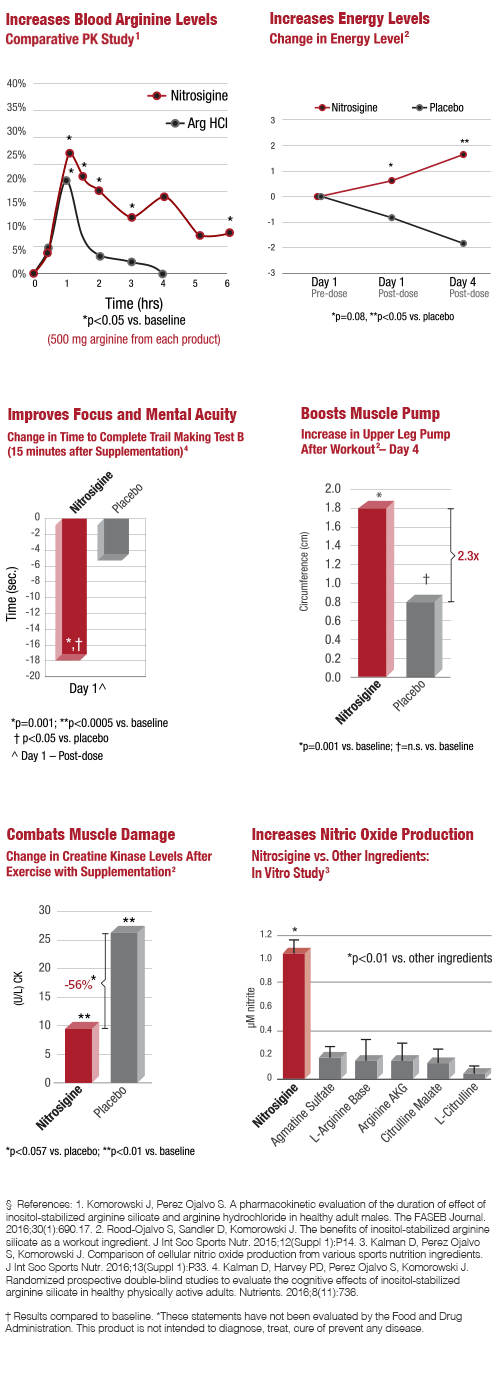
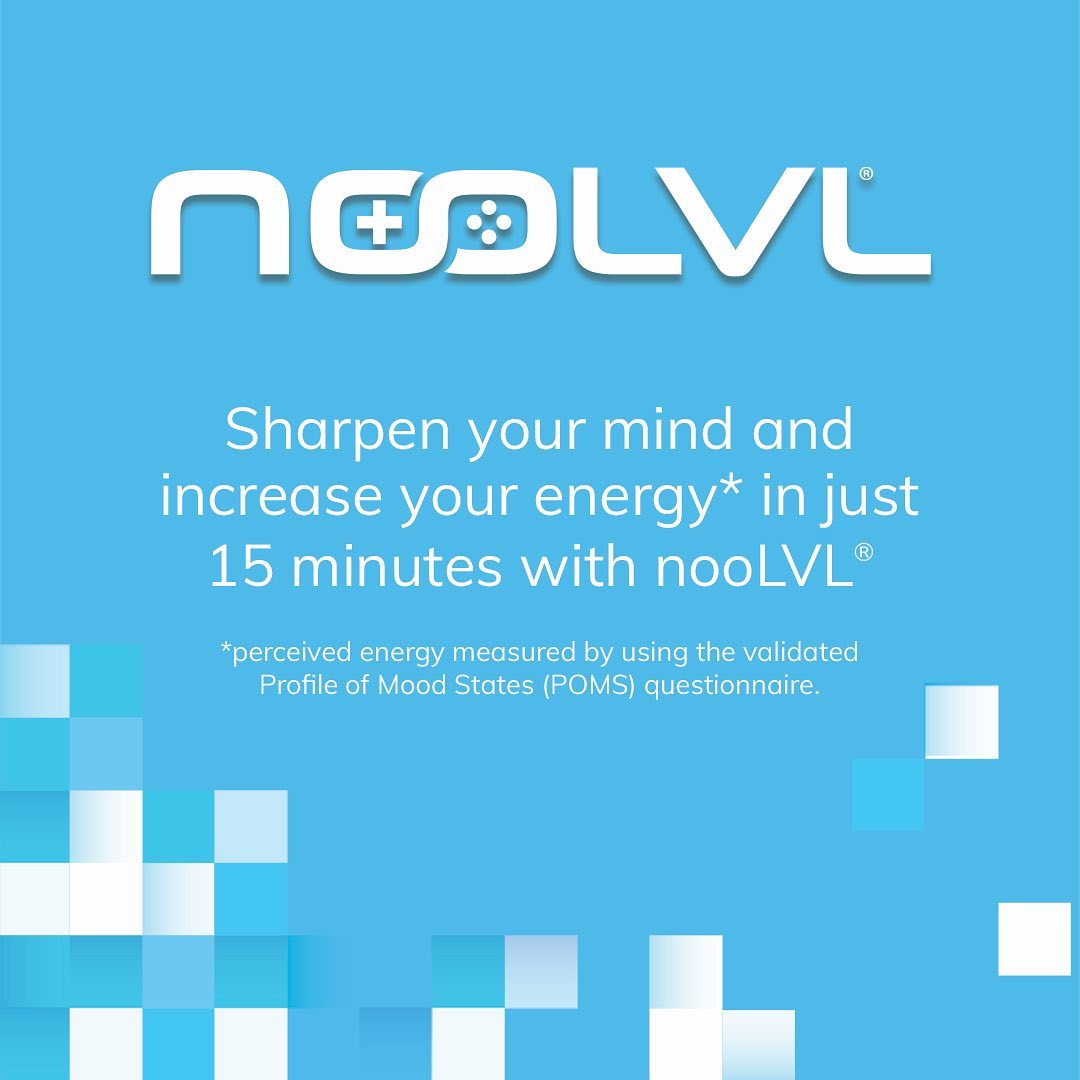
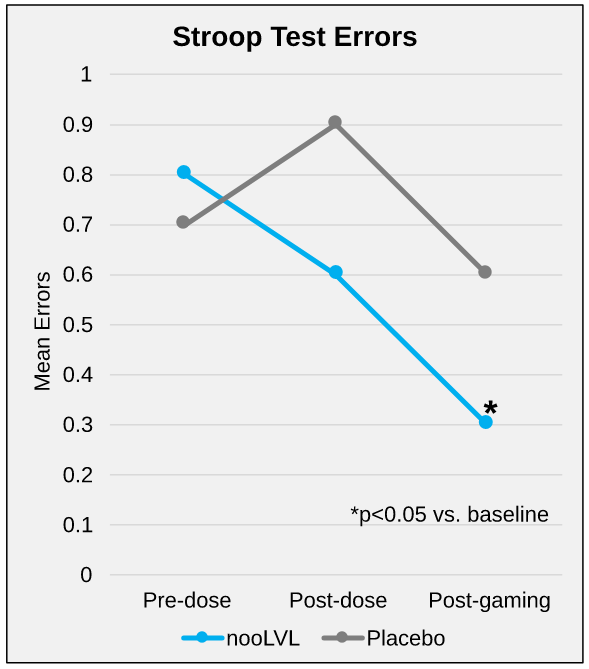

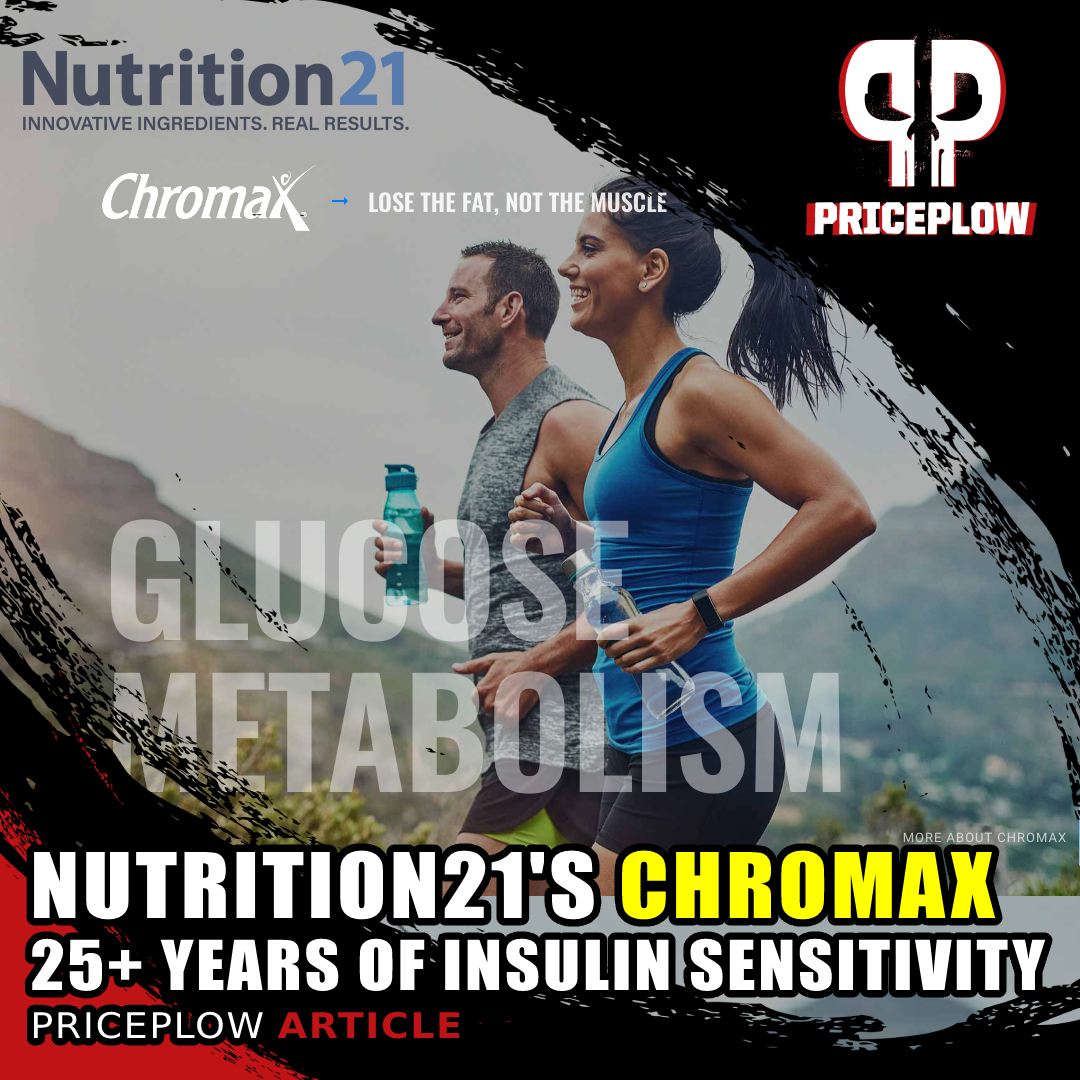
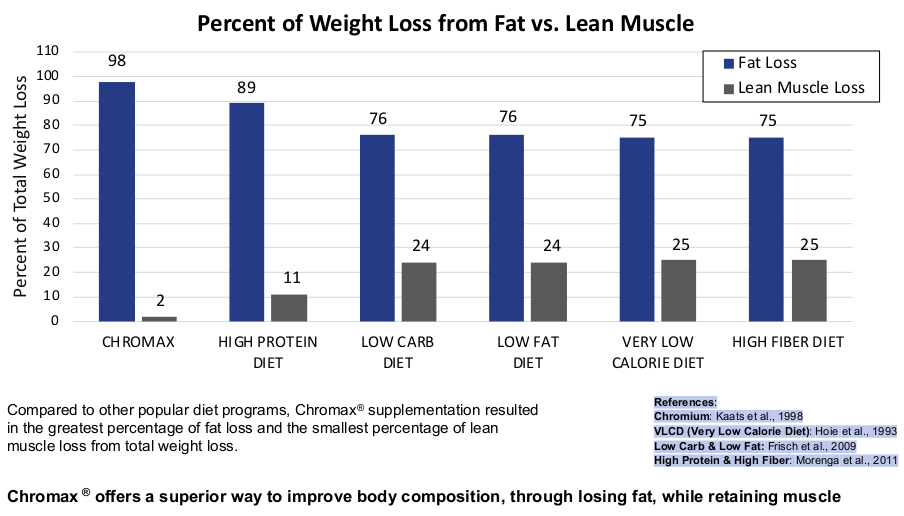
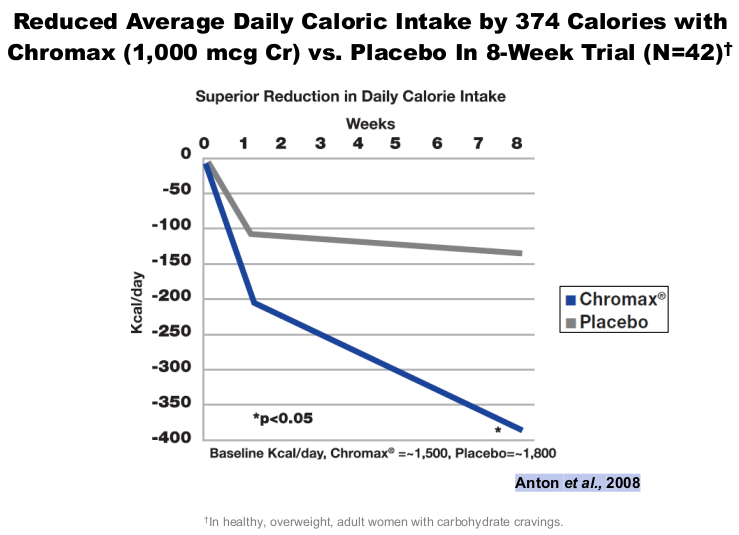
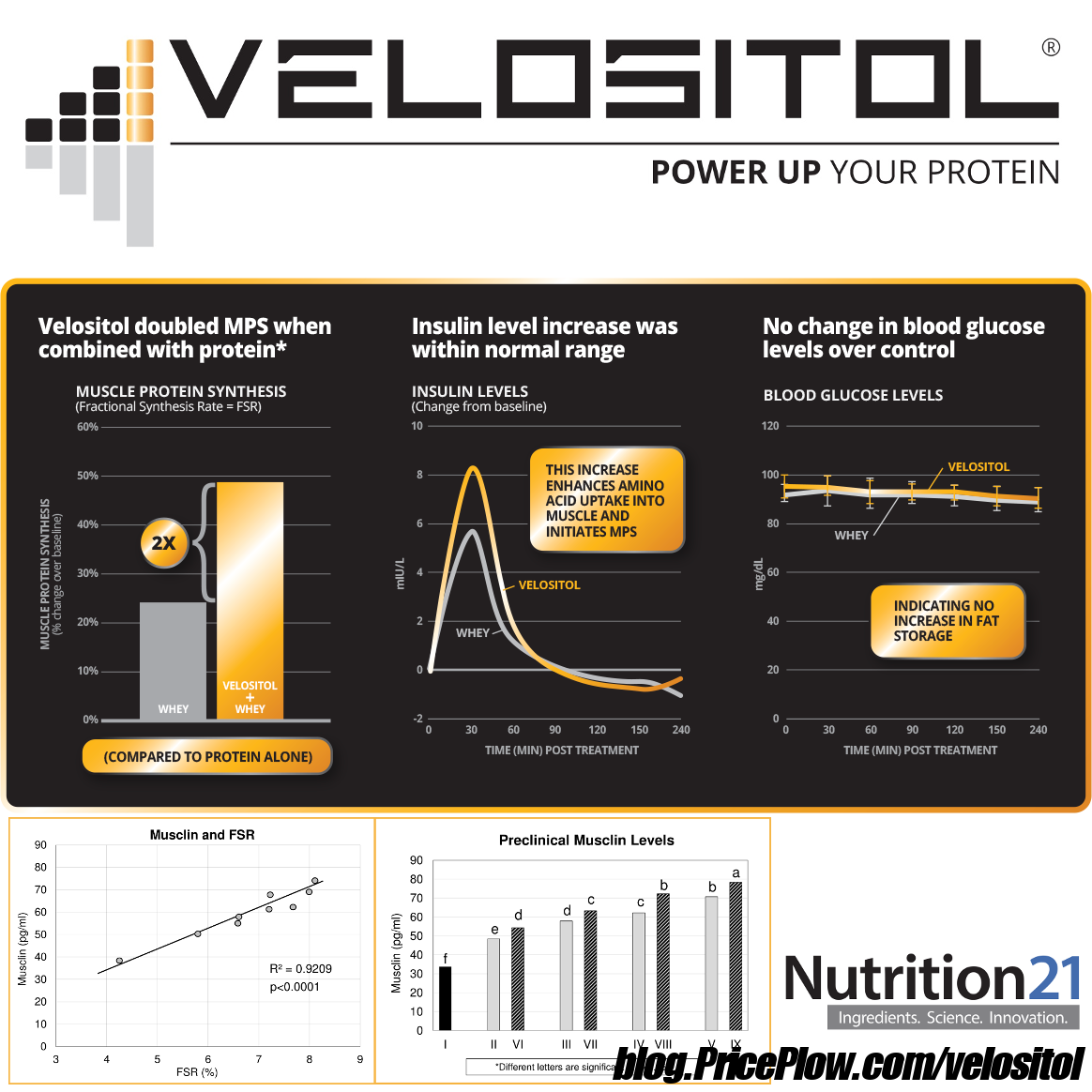
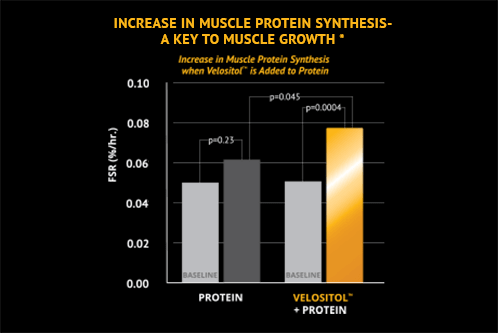
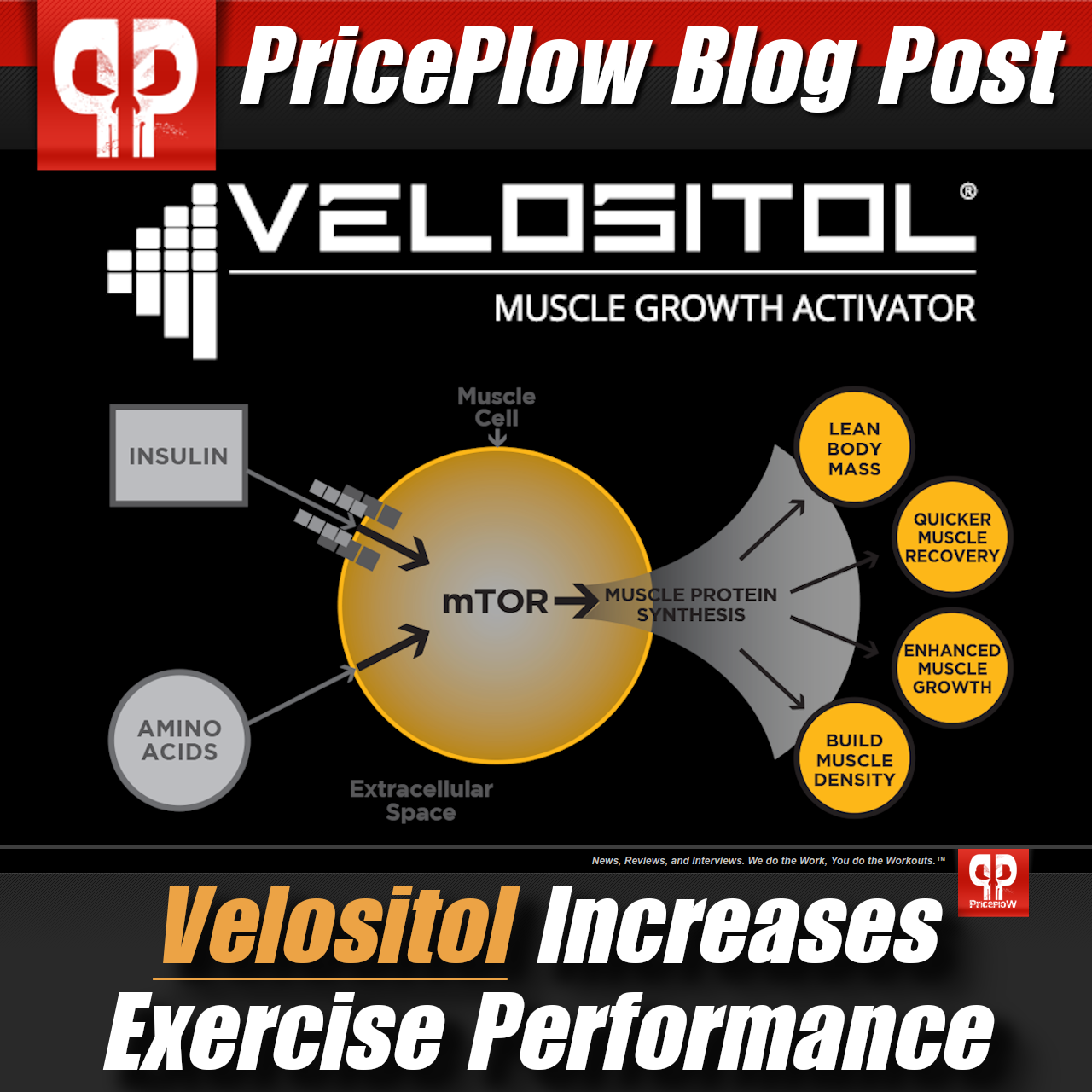
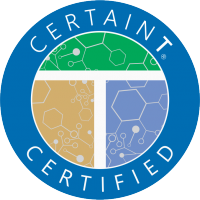


Comments and Discussion (Powered by the PricePlow Forum)